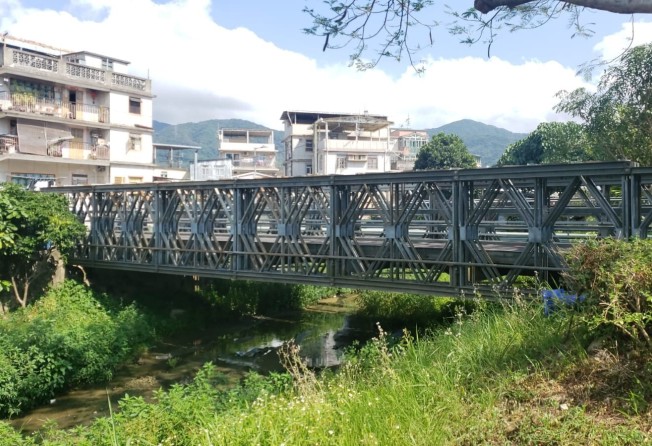
From Hong Kong to Nepal, Bailey bridges have helped build communities
- Quick and easy to erect, the bridges are credited with helping the Allied forces win World War II
- Hong Kong’s Bailey bridges were mainly built by Gurkhas, often with funding from the Kadoorie family

Dotted around the New Territories, metal girder Bailey bridges provide lingering reminders of the vanished British garrison. Most were assembled as part of peacetime military assistance to rural improvement projects, back when the military presence in Hong Kong was popularly regarded as a positive addition to local life.
Like many “hearts and minds” projects, Bailey bridges are now largely forgotten. They recall the decades-long Gurkha presence in the New Territories, and the generous contributions to village livelihood and welfare provision, in both Hong Kong and Nepal, that the Kadoorie family have provided for so long, with little fanfare.
The Queen’s Gurkha Engineers (QGE) regularly carried out training exercises around the New Territories, which involved the construction – often with additional funding from the Kadoorie AgriculturalAid Association (KAAA) – of Bailey bridges. The military typically provided the bridge as part of a training exercise, while the KAAA supplied cement, sand and gravel for constructing solid approaches over watercourses and paths between villages.
As well as being a useful skill for a military career, knowing how to build and maintain Bailey bridges had substantial crossover benefits for ex-Gurkhas on their eventual retirement to Nepal.

Gurkha servicemen, typically, were recruited from remote areas in the foothills of the Himalayas, with limited or non-existent road access. Until the 1980s, when retired Gurkhas started to settle in Kathmandu, or towns close to the Indian border, former servicemen tended to return permanently to the isolated hill villages they had left a few decades earlier.
Once back in Nepal, with financial aid from the KAAA and other Gurkha welfare organisations, some ex-servicemen became involved in rural improvement schemes. These ranged from better water supplies, medical facilities and schoolhouses to enhanced animal husbandry techniques.
For former engineers, building village infrastructure was easy work; in consequence, Bailey bridges built – and subsequently maintained – by those who had the training and experience from their time in Hong Kong can be found all over Nepal.
The bridge design was named for Donald Bailey, a British civil servant with an enthusiasm for mechanics; the components resemble giant Meccano pieces, and boys who had delighted in these items as children responded enthusiastically to the design as adults. Bailey developed his prototype in the mid-30s, and as international tensions rose, the military applications for this invention became evident.
Depending on the anticipated weight of road traffic, Bailey bridges might have several layers of external supports bolted together as reinforcement. Those intended for pedestrians and motorcycles are typically single-layered. The strongest bridges can take the weight of a tank. Field Marshal Bernard Montgomery maintained, with some justification, that without this invention, the Allies would not have won World War II.
Knighted in 1946 for this vital contribution to the British war effort, Bailey lived quietly for decades in Bournemouth, in southern England, and died in 1985.
Lowland watercourses around the New Territories are often spanned by Bailey bridges; one is in use for vehicular traffic over a now-diverted bend of the Kam Tin River, at Shui Tau Tsuen, and another over a similar streambed at Kam Tsin Wai. Other examples can be found near Fanling and Castle Peak, around village areas close to former British military installations, and are obvious if the interested wanderer knows what he or she is looking at.
Several Bailey bridges cross shallow gullies and small ravines on the hillside at Shek Kong Village; after years of benign neglect, one on Route Twisk has been recently renovated by its present owners, the local People’s Liberation Army detachment.